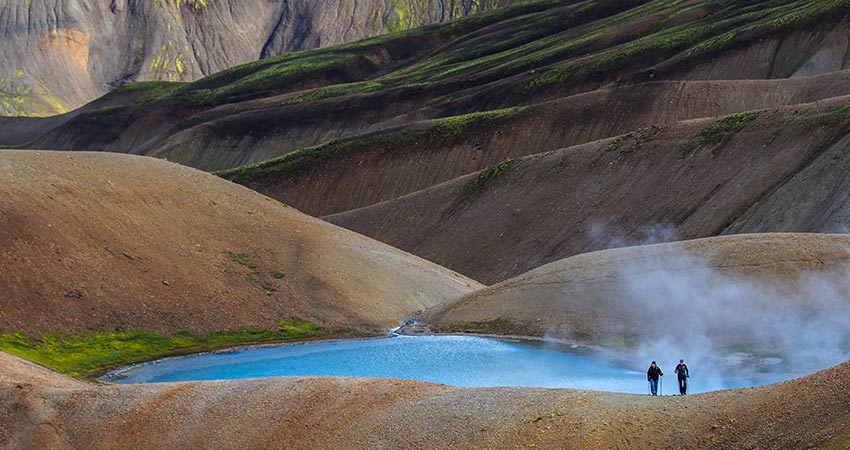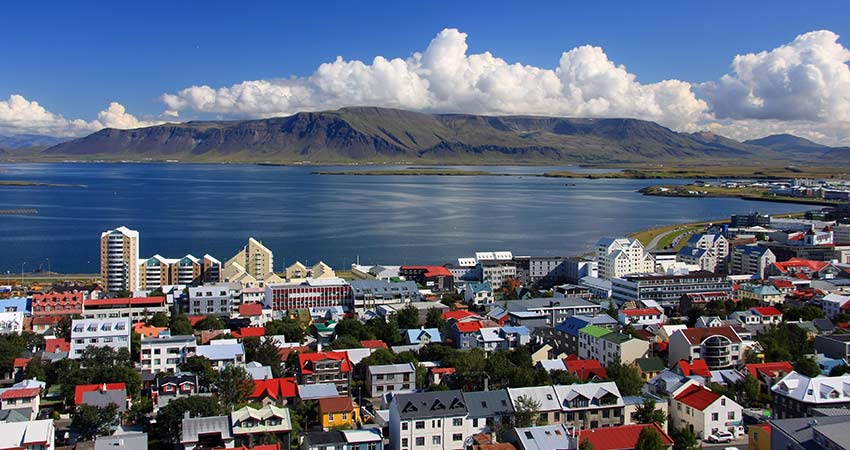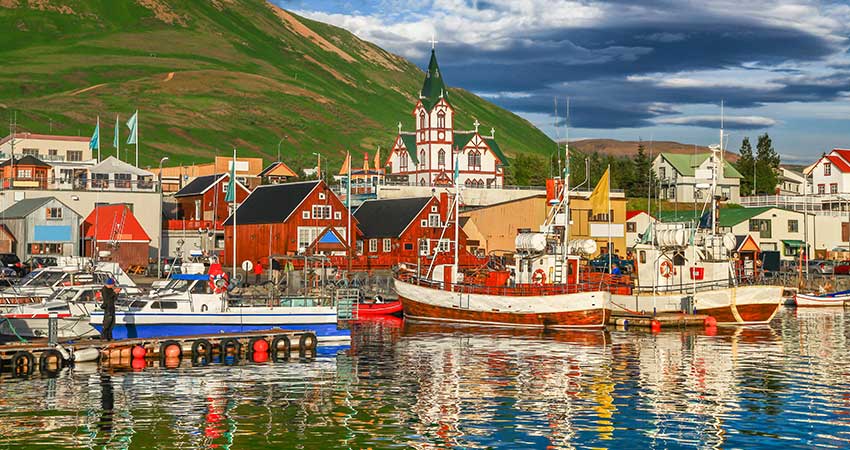Most of Iceland is south of the Arctic Circle. Locals are used to weather and daylight patterns that are unusual in other parts of the world. From what to wear, to how and when to visit, here’s what you need to know about thriving in Iceland’s climate:
Iceland’s Seasons
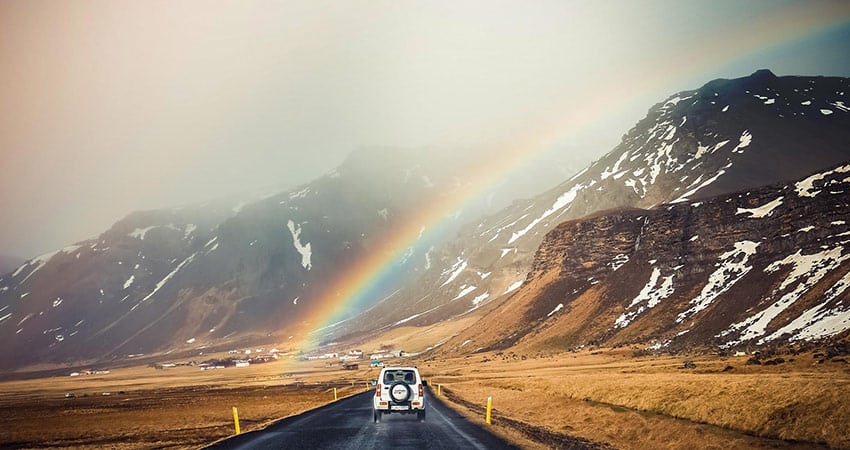
Iceland’s winters are relatively mild considering what you might expect from a nation near the Arctic Circle. But the weather can shift on a dime, and snow and rain can happen unexpectedly. Many of Iceland’s tourist attractions close for the winter, but one big advantage of visiting during the colder months is that you’ll be arriving during the Northern Lights season.
If you want to experience mild weather, but don’t want to face the summer tourist crowds, consider visiting in late spring (April and May) or fall (September and October). In spring and fall, Iceland’s daylight hours are similar to that of other parts of the world. During the winter months, however, Iceland sees little daylight—about 4 to 5 hours of sunlight per day in Reykjavik. In the summer, the sun does not completely set for several months. During this phenomenon, known as “midnight sun,” the sun hangs low in the sky in the evening. It casts a buttery light on your surroundings.
How To Dress For Iceland’s Climate
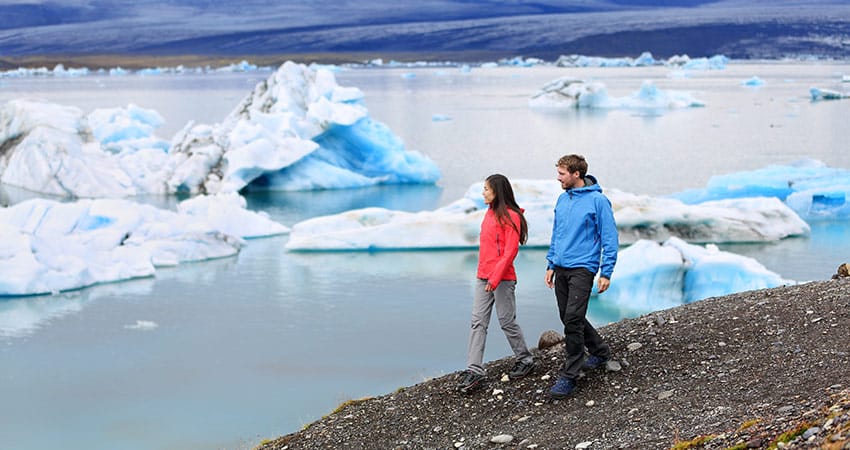
The most important thing to remember when packing for a trip to Iceland is that the weather can change quickly. You may experience bright sunshine, overcast skies, and driving rain within the span of an hour. Iceland can also be windy. Because of this, you’ll want to wear layers when you’re out exploring. Button-up flannels and thick sweaters are great to have on hand. Once you arrive, you might want to pick up a lopapeysa, a traditional Icelandic sweater, for extra coziness.
Because Iceland can be chilly, even in the summer, you’ll always want to have at least a light jacket and a raincoat. If you’re arriving at any time other than summer, you’ll also want to have a heavier coat to keep you warm in any situation. If your plans in Iceland involve lots of driving, make the weather changes easier on yourself by stashing backup coats and layers in your vehicle as you explore. No matter how much sunshine the forecast calls for, you never know when you’ll get caught in a rainstorm or cold snap.
While exploring Iceland can call for some serious bundling up, you’ll find typical urban attire in most parts of Reykjavik. Locals are often decked out in stylish outfits under their winter coats, just like residents of any other major city—but they’re far more prepared for weather changes than your average New Yorker or Parisian.
When it comes to footwear, pack hiking boots or an equivalent shoe for exploring the countryside. Iceland’s terrain can be rugged—regular sneakers don’t cut it in the same way hiking boots do. Even if you spend all your time in Reykjavik, you may be glad that you have boots to keep your feet dry!
Iceland is a symphony of nature’s most primal wonders. Mudpots, glacier walks, clean air, and waterfalls that roar down volcanic crests are yours. The city of Reykjavik is cosmopolitan, diverse, and artistic. It is a song to individualism… and you will not find more hospitable people.
Any time of year can be perfection for an Iceland vacation. Let your Destination Expert know what you want to do, and they’ll create the right itinerary for you!


